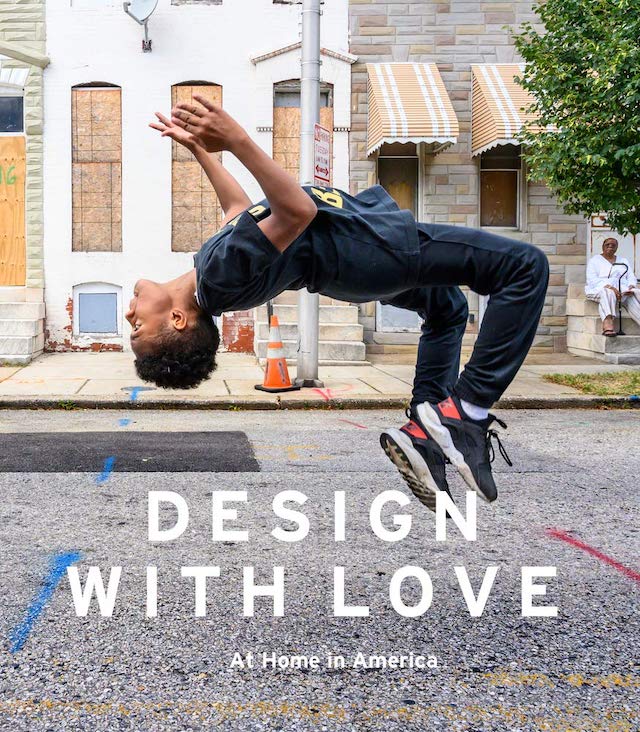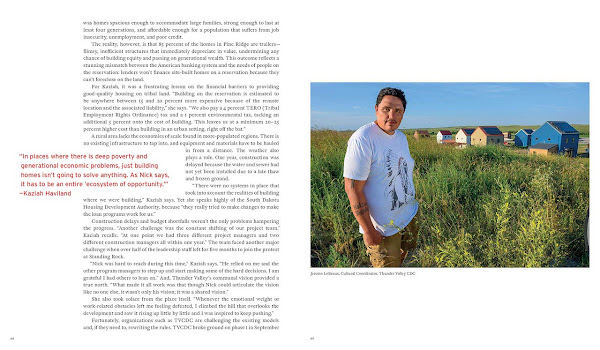Design with Love
Design with Love: At Home in AmericaKatie Swenson; photography by Harry ConnollySchiffer, September 2020Hardcover | 9 x 10-1/2 inches | 240 pages | 150 illustrations | English | ISBN: 978-0764359934 | $45.00PUBLISHER'S DESCRIPTION:Over the last 20 years, the Enterprise Rose Fellows—a program of Enterprise Community Partners—have gained a deep understanding of the conditions that cause housing insecurity, poverty, and injustice by embedding themselves in the communities where they work. By using proven design processes, artistic practices, and community engagement principles, and committing to long-term collaborations with residents, they have drastically improved the quality of life in vulnerable communities. Simply put, they have changed lives. This collection of stories and intimate documentary photographs from 10 locations delivers lessons in how we can work together to improve the lives of our neighbors. On the US-Mexico border, in farm country, in Rust Belt cities, and in pockets of blight and abandonment, the examples show that architecture is about human relationships and shared ambitions, and how buildings can support and embody them.Katie Swenson is a nationally recognized design leader, researcher, writer, and educator. Katie is senior principal at MASS Design Group, a nonprofit design collective that designs, builds, and advocates for architecture that promotes human dignity. She was formerly vice president of design and sustainability at Enterprise Community Partners, a national nonprofit that has invested $43.6 billion in community development since 1982.REFERRAL LINKS: dDAB COMMENTARY:Last year the Enterprise Rose Fellowship celebrated its 20th anniversary, releasing Design with Love, a book that highlights ten places that have been impacted by ten of its fellows. The fellowship is named for its host, Enterprise Community Partners, and founders, developer Frederick P. Rose and his son, Jonathan F. P. Rose, also a developer. As Jonathan recounts in his foreword to the book, a few weeks before his father died in 1999 he asked his son to help him create a fellowship for young architects, one that would liberate them "from the menial jobs that came with starting in the profession" and enable them to "learn how to be community planners" and "to bring design to places that the design world has forgotten." The book describes the success of the Rose Fellowship across its first two decades.One of the first fellows was Katie Swenson, whose three-year fellowship (2001-2004) focused on the Page Street Neighborhood Initiative in Charlottesville, Virginia, an experience she recounts in the book's introduction. At the tail end of the fellowship, Swenson set up the Charlottesville Community Design Center, which co-organized the 2005 Urban Habitats competition, out of which another book, Growing Urban Habitats (2009), was made. Formerly a vice president at Enterprise and now a partner at MASS Design Group, Swenson spent a couple years with photographer Harry Connolly visiting Rose Fellow recipients around the United States. Swenson and Connolly honed their words and images, respectively, on the people living, working, and playing in the projects that the fellows have been involved with. The cover is just one clear indication of this emphasis.As such, from its title to its presentation, Design with Love is an atypical architecture book. Those in search of photos and other documentation of buildings will be disappointed, but people who appreciate stories about the people and places that are the basis and setting for architecture will be quite happy. The most overtly architectural project in the whole book is Star Apartments, designed by Michael Maltzan Architecture for Skid Row Housing Trust in Los Angeles, where Theresa Hwang served as a Rose Fellow (2009-2012). In Swenson's hands, readers learn about the history of Skid Row and how Hwang worked with the Trust and Maltzan's firm on the innovative project. Connolly's photos show us the building, but also the Skid Row context, some important residents of the area, and Hwang and her family marching in the Skid Row "Walk the Talk" Parade, evidence of her continued ties with the community — a trait shared by just about all of the fellows.Although the other building projects discussed in Design with Love aren't as architecturally striking as Star Apartments, I'm guessing the main audience for this book — young architects interested in social justice and community development rather than traditional practice — won't mind at all. Many projects, such as Thunder Valley Regenerative Community in South Dakota (third and fourth spreads, below), look like traditional buildings, which implies the input of architects was not needed. But given how the Rose Fellows embed themselves in the communities they serve, the results are always the outcome of community interaction, not predetermined ideas about architecture or planning. In the case of the large homes for the Lakota comm

Katie Swenson; photography by Harry Connolly
Schiffer, September 2020
Hardcover | 9 x 10-1/2 inches | 240 pages | 150 illustrations | English | ISBN: 978-0764359934 | $45.00
PUBLISHER'S DESCRIPTION:
REFERRAL LINKS:
SPREADS:









